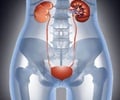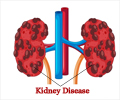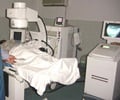Kidney damage sets off complications in patients, spreading organ failure throughout their bodies due to alterations in kidney-based genes that sabotage inflammation-control.
Kidney damage often sets off a slew of complications in patients, spreading organ failure like wildfire throughout their bodies. Now, researchers at Johns Hopkins say they have evidence in mice that this deadly progression-at least to the lungs-may be due to genetic alterations in kidney-based genes that sabotage inflammation- control and send toxic signals to healthy organs. The signals convince these organs to react as if they, too, are damaged.
The study, led by Dmitry N. Grigoryev, M.D., Ph.D., instructor in the Division of Clinical Immunology at the Johns Hopkins University School of Medicine, identifies 109 inflammatory genes that change activity with remarkable similarity in kidneys and lungs after kidney damage due to disease or injury.'What we hope is that these genes will eventually provide new targets to prevent wider organ failure before it occurs,' Grigoryev says.
The research team focused on collateral damage to the lungs, since this organ is one of the first to fail in many patients with kidney damage. This complication is also extraordinarily deadly, killing about 80 percent of those who experience it.
Scientists have previously suggested that the lungs might be picking up chemicals that injured kidneys leak into the bloodstream. 'The lung is a huge filter. Whatever signals the kidneys are pumping out, the lung sees. The lung doesn’t know it’s healthy-these signals make it think it’s sick,' says Grigoryev.
To identify those chemical signals, he and his team experimentally cut off blood flow to kidneys in one group of test mice for up to 60 minutes, irreparably damaging the organs.
Other animals had sham operations that didn’t damage the kidneys.
Advertisement
Comparing activity levels of genes in animals with damaged kidneys to those without, the researchers found that several inflammatory genes, including Cd14, Socs3, Saa3, Lcn2, and Il1r2, increased activity in both organs. Further tests showed that this rise appeared to set off a cascade of chemical signaling that causes the kidney and circulating white blood cells to release inflammatory proteins.
Advertisement
This study was supported by grants from the National Institutes of Health Acute Lung Injury SCCOR, the Mary Beryl Patch Turnbull Scholar Program, and the National Kidney Foundation.
Source-JOHN HOPKINS
SRM/L











